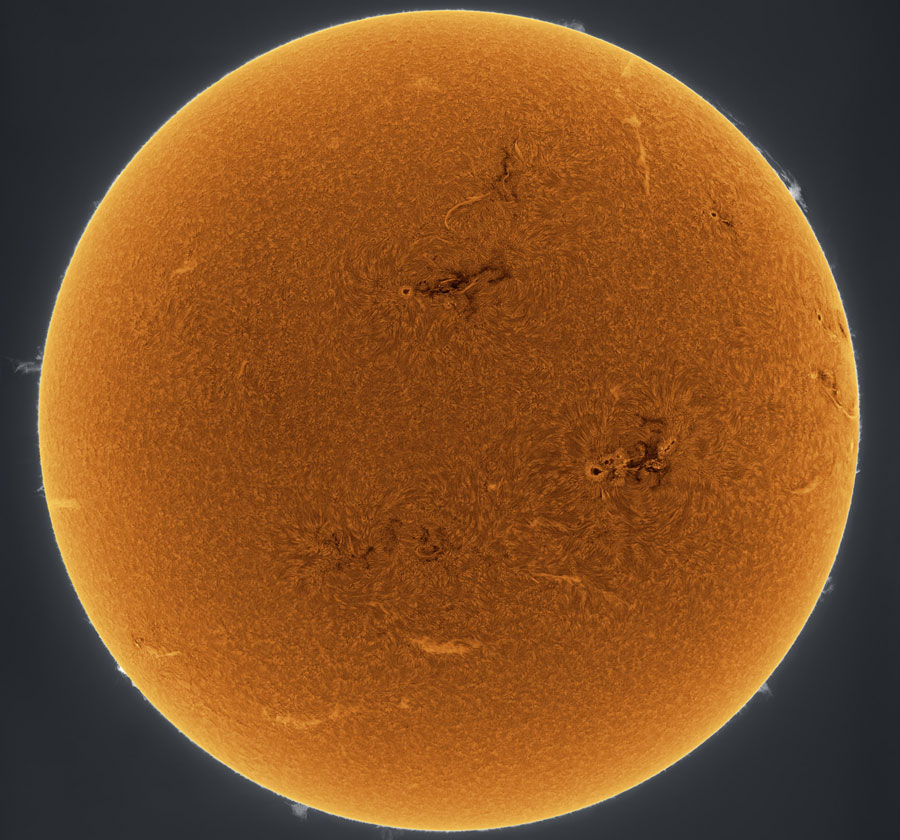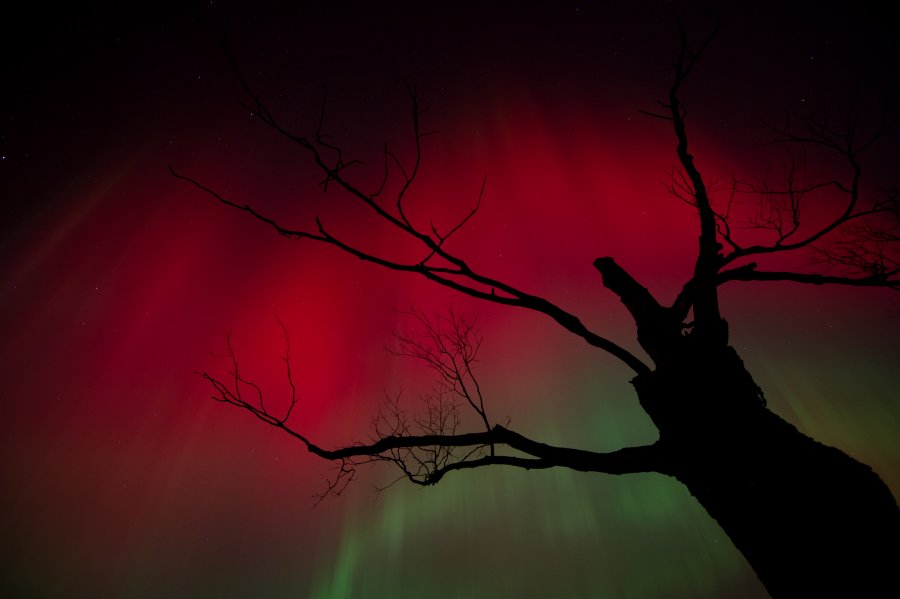
The photograph above was captured using Hydrogen Alpha(usually the brightest wavelength of light in stellar astronomy), so it is falsely colored. There are many spicules (jets with about a 500 km diameter) visible on the Sun's surface. Also in the photograph there is noticable color change along the edges of the Sun, this phenomenon is known as limb darkening and is caused by the lower temperatures at the larger heights of the Sun (hence less intense, so darker). The Sun's magnetic field is moving towards Solar Maximum, the period at which there is the greatest amount of solar activity and sun spots appear, in the next few years. This means that we can expect a busier, more complex Sun to view in the near future.

